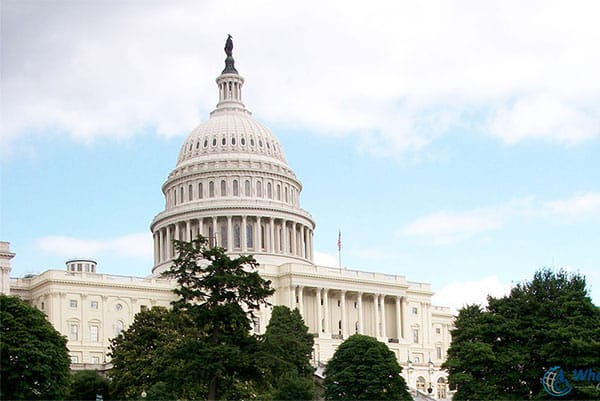
Washington, D.C. is filled with countless monuments and memorials which reflect the history of the American spirit and its determination to protect and promote universal freedom. The capital of the United States of America, Washington is home to all three branches of the federal government. The monuments, memorials and government buildings listed below are all wheelchair accessible. Government buildings, however, do place limits on admittance. Details are provided below.
National Mall
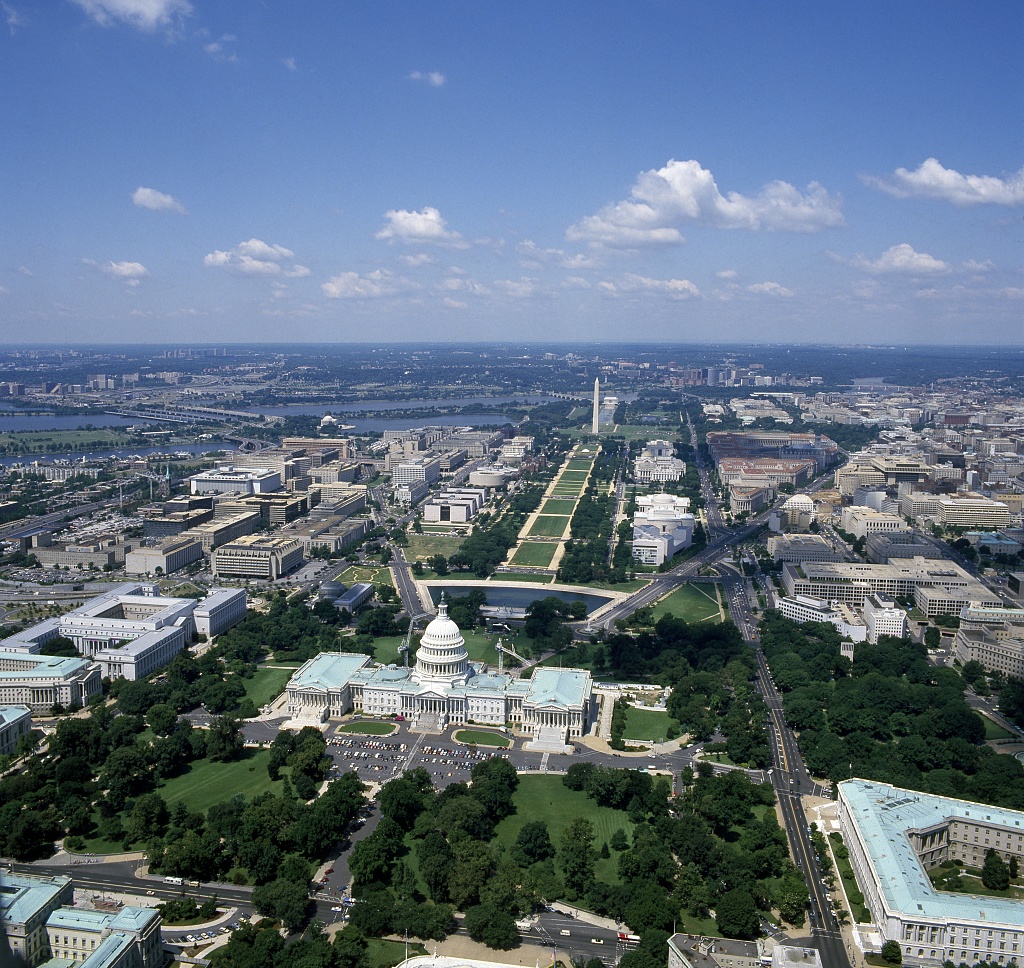
The National Mall is a national park which is bordered by many of Washington’s monuments, memorials and museums. Standing on the eastern end of the Mall is the United States Capitol Building. Moving West of the Capitol, the Washington Monument is 1.2 miles down the Mall and the Lincoln Memorial is 1.9 miles from the Capitol steps. The Reflecting Pool sits between the Washington Monument and Lincoln Memorial. The Mall is lined with walkways and the lawns are well manicured, so wheelchair users will have no difficulty touring and traversing the area.

Nearest Metro subway: Please see individual locations on the National Mall for the closest subway — details below
Washington Monument
Standing 555 feet tall, the Washington Monument is both the world’s tallest obelisk and stone structure. Built to commemorate George Washington, first President of the United States, it is a central component of the National Mall. Construction began in 1848, but was not completed until 1888. Visitors are able to visit the top of the monument, which offers a 360-degree view of the National Mall, looking out over many of the capital city’s memorials, government buildings and parks. The Monument is fully wheelchair accessible, but tickets are required for access. Tickets are free and can be reserved in person or online. The internet option involves a $1.50 service charge. For more information or to reserve tickets, CLICK HERE.

Nearest Metro subway: 4 blocks from Blue/Orange/Silver Lines at Smithsonian station
United States Capitol Building
Completed in 1800, the United States Capitol sits at the eastern end of the National Mall. It is the seat of the legislative branch of the American government. William Thornton is the credited architect, with his design proposal selected by President George Washington and Thomas Jefferson. Numerous other architects, including Henry Latrobe, modified the design prior to construction.
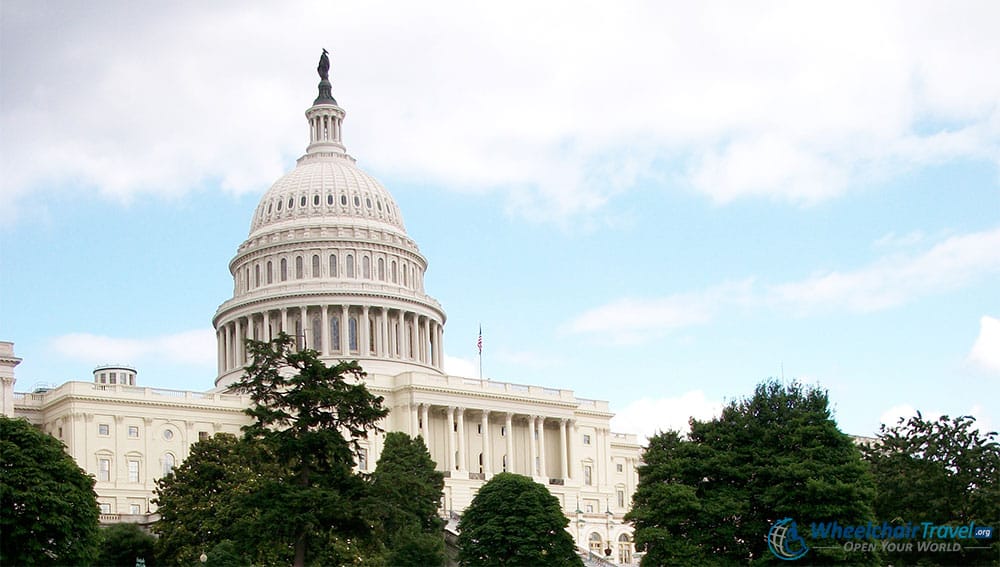
The Capitol is a must see for visitors to Washington, D.C. and tours are available with advanced booking. For more information on the process of securing a tour reservation, CLICK HERE.

Nearest Metro subway: 3 blocks from Blue/Orange/Silver Lines at Capitol South station
Jefferson Memorial
The Jefferson Memorial was built in 1943 in honor of Thomas Jefferson, America’s third president and the primary writer of the Declaration of Independence. The memorial was constructed along the Washington channel of the Potomac River. Representing a classical revival style, architect John Russell Pope took many design cues from the Pantheon in Rome, Italy. The interior of the memorial houses a 19-foot statue of Jefferson by sculptor Rudolph Evans. Parts of the Declaration of Independence are inscribed into the memorial itself.

Nearest Metro subway: 0.7 miles from Blue/Orange/Silver Lines at Smithsonian station
Lincoln Memorial
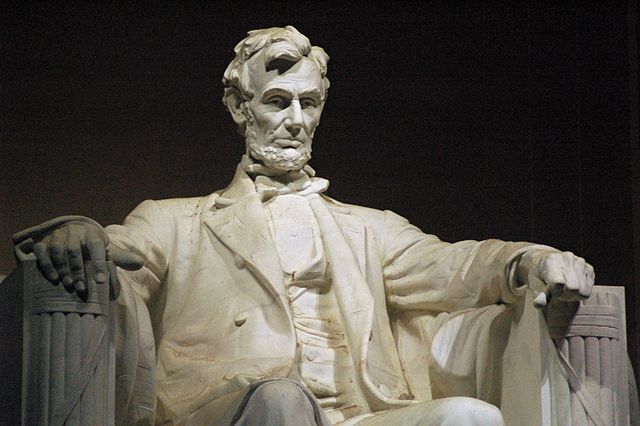
Built to honor the 16th President of the United States, Abraham Lincoln, the memorial is located at the western end of the National Mall. The Lincoln Memorial was dedicated in 1922 and contains a large statue of the president and inscriptions of two famous speeches, including the The Gettysburg Address. The memorial has been the site of many famous rallies and speeches, including Martin Luther King’s 1963 “I Have a Dream” speech in support of racial equality and freedom.

Nearest Metro subway: 0.9 miles from Blue/Orange/Silver Lines at Foggy Bottom station
Martin Luther King, Jr. Memorial
Completed in 2011 and located within West Potomac Park, a short walk from the National Mall. The memorial was built in honor of civil rights leader and activist Martin Luther King, Jr. King is particularly remembered for his 1963 “I Have a Dream” speech on the steps of the Lincoln Memorial during the March on Washington for Jobs and Freedom. The centerpiece of the memorial is the “Stone of Hope,” which includes a sculpture of Reverend King and inscriptions of excerpts from his famous speeches.

Nearest Metro subway: 0.9 miles from Blue/Orange/Silver Lines at Smithsonian station
World War II Memorial
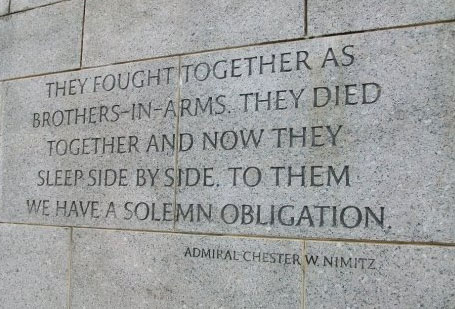
The National World War II Memorial, dedicated in 2004, memorializes the Americans who served in the armed forces or as civilians in the second World War. The memorial sits at the eastern end of the Reflecting Pool, between the Lincoln Memorial and Washington Monument. The memorial features 56 pillars, one for each of the 48 states in 1945 and one for each American territory. Two arches stand on either side of the memorial, dedicated to the Atlantic and Pacific war theaters. Stunningly beautiful when lighted at night, a fountain stands at the center of the memorial’s plaza.

Nearest Metro subway: 0.7 miles from Blue/Orange/Silver Lines at Smithsonian station
Vietnam Veterans Memorial
Completed in 1982, the Vietnam Veterans Memorial is home to three distinct components: The Three Soldiers statue, which depicts three servicemen in uniform; the Vietnam Women’s Memorial, a statue honoring female contributors to the war effort, particularly in nursing; and the Veterans Wall, which bears the names of the servicemen who lost their lives or remain missing in action. As of May 2011, the wall contains the names of 58,272 servicemen and women.

Nearest Metro subway: 0.8 miles from Blue/Orange/Silver Lines at Foggy Bottom station
White House
The official residence of the President of the United States, the White House is located at 1600 Pennsylvania Avenue. Construction was completed in 1800. The third President of the United States, Thomas Jefferson, was the first resident. The White House offers an exceptional opportunity for photography, with its immaculate gardens and sparkling facade. Tours of the White House are available to both citizens of the United States and foreign countries. Tour requests must be placed at least 21 days in advance through one’s congressional representative or embassy. For more information on White House tours, visit whitehouse.gov.

Nearest Metro subway: 3 blocks from Blue/Orange/Silver Lines at Farragut West station or McPherson Square station
Pentagon
The Pentagon is the headquarters of the United States Department of Defense. It is the largest low rise office building in the world. Construction was completed in 1943. Approximately 23,000 military and civilian employees work within the building each day. The Pentagon was attacked during the September 11, 2001 attacks, destroying a large portion of the building’s Western side. Tours of the building are available to the general public, but must be requested between 14 and 90 days in advance. The tour exposes visitors to the history of the military’s four branches, offers access to the memorial at the September 11th crash site, and concludes at the Hall of Heroes. The Hall of Heroes is a space dedicated to honoring the more than 3,400 recipients of the Medal of Honor, the United States’ highest military decoration. For more information on the Pentagon tour or to request one, visit pentagontours.osd.mil. Tours of The Pentagon are accessible to the disabled and those using wheelchairs.

Nearest Metro subway: Blue/Yellow Lines at Pentagon station
Supreme Court of the United States
The Supreme Court of the United States is the highest court in the United States and governed by the Constitution of the United States. The court’s building was designed by Carl Cass and was constructed between 1931 and 1935. The building is a dominant structure, designed to reflect the Supreme Court’s status as an independent and coequal branch of the United States government.
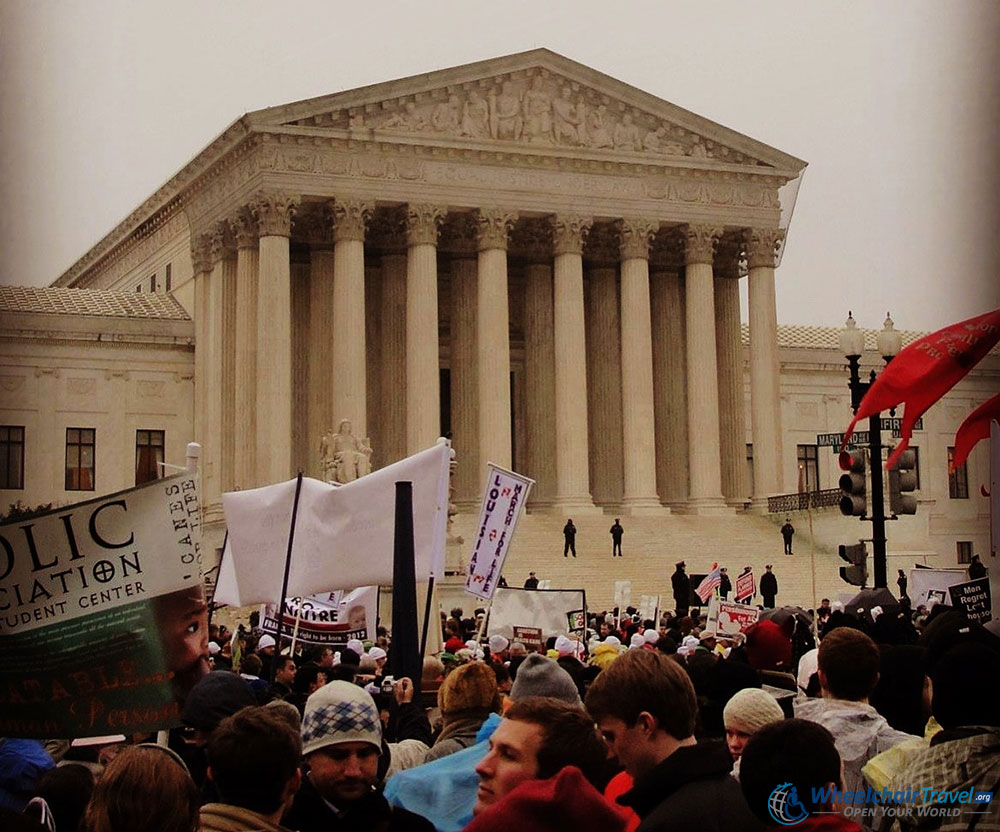
Visitors are able to tour the Supreme Court Monday through Friday from 9 a.m. to 4:30 p.m. While there is no guided tour, visitors may walk through the building themselves and attend the lectures offered throughout the day. Access to the courtroom to witness oral arguments is available to everyone on a first come, first served basis. For more information on touring the Supreme Court, visit supremecourt.gov. The Court is wheelchair accessible, with an entry ramp located along Maryland Avenue on the left side of the building.

Nearest Metro subway: 3 blocks from Blue/Orange/Silver Lines at Capitol South station
Arlington National Cemetery
A United States military cemetery in Arlington, Virginia, the Arlington National Cemetery sits across the Potomac River from the nation’s capital. The cemetery sits on 624 acres and holds the buried remains of more than 400,000 American service men and women. Arlington National Cemetery was established in 1864, following the American Civil War.

In addition to the individual burial sites with marked headstones, the cemetery is also home to a number of significant monuments. The most visited among tourists is the Tomb of the Unknowns, opened in 1932 to house the remains of an unknown soldier killed in World War I. The tomb is perpetually guarded by the U.S. Army and now contains the remains of two additional unknown soldiers, one from World War II and another from the Korean War. For more information on the cemetery and memorials located there, visit its official website ay www.arlingtoncemetery.mil. The cemetery grounds are wheelchair accessible, with paths located throughout.

Nearest Metro subway: Blue Line at Arlington Cemetery station



